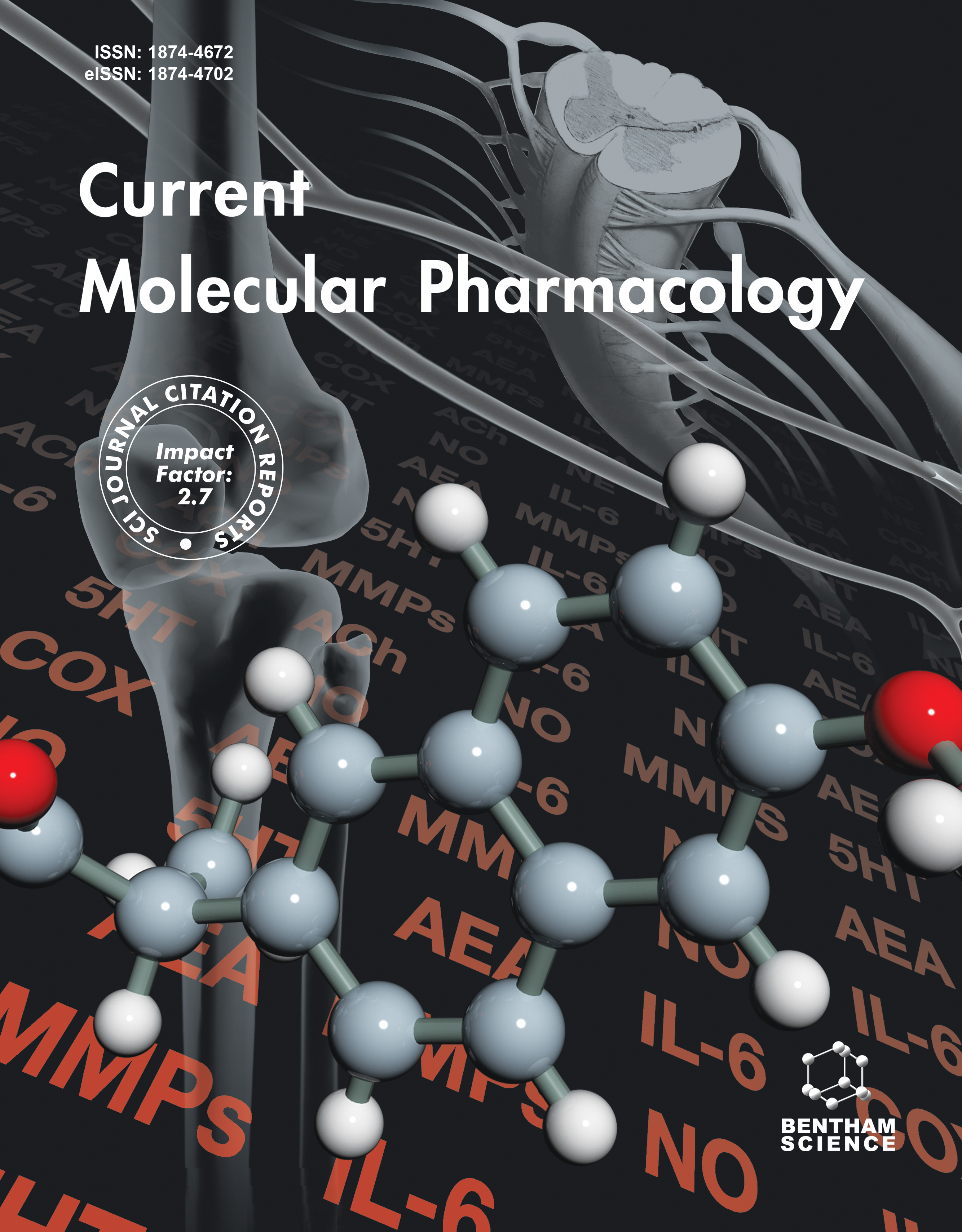- Home
- A-Z Publications
- Current Molecular Pharmacology
- Previous Issues
- Volume 12, Issue 3, 2019
Current Molecular Pharmacology - Volume 12, Issue 3, 2019
Volume 12, Issue 3, 2019
-
-
Convergence of Canonical and Non-Canonical Wnt Signal: Differential Kat3 Coactivator Usage
More LessAuthors: Keane K.Y. Lai, Cu Nguyen, Kyung-Soon Lee, Albert Lee, David P. Lin, Jia-Ling Teo and Michael KahnBackground: The ancient and highly evolutionarily conserved Wnt signaling pathway is critical in nearly all tissues and organs for an organism to develop normally from embryo through adult. Wnt signaling is generally parsed into “canonical” or Wnt-β-catenin-dependent or “non-canonical” β-catenin-independent signaling. Even though designating Wnt signaling as either canonical or noncanonical allows for easier conceptual d Read More
-
-
-
Pharmacokinetic and Pharmacodynamic Aspects of Peyote and Mescaline: Clinical and Forensic Repercussions
More LessBackground: Mescaline (3,4,5-trimethoxyphenethylamine), mainly found in the Peyote cactus (Lophophora williamsii), is one of the oldest known hallucinogenic agents that influence human and animal behavior, but its psychoactive mechanisms remain poorly understood. Objectives: This article aims to fully review pharmacokinetics and pharmacodynamics of mescaline, focusing on the in vivo and in vitro metabolic profile Read More
-
-
-
A Contemporary Overview of PPARα/γ Dual Agonists for the Management of Diabetic Dyslipidemia
More LessAuthors: Pitchai Balakumar, Nanjaian Mahadevan and Ramanathan SambathkumarBackground: Diabetes mellitus and concomitant dyslipidemia, being referred to as ‘diabetic dyslipidemia’, are the foremost detrimental factors documented to play a pivotal role in cardiovascular illness. Diabetic dyslipidemia is associated with insulin resistance, high plasma triglyceride levels, low HDL-cholesterol concentration and elevated small dense LDL-cholesterol particles. Maintaining an optimal glucose and lipid le Read More
-
-
-
Mitochondria-Targeted Drugs
More LessAuthors: Roman A. Zinovkin and Andrey A. ZamyatninBackground: Targeting of drugs to the subcellular compartments represents one of the modern trends in molecular pharmacology. The approach for targeting mitochondria was developed nearly 50 years ago, but only in the last decade has it started to become widely used for delivering drugs. A number of pathologies are associated with mitochondrial dysfunction, including cardiovascular, neurological, inflammatory and Read More
-
-
-
Targeting Chromatin Remodeling for Cancer Therapy
More LessAuthors: Jasmine Kaur, Abdelkader Daoud and Scott T. EblenBackground: Epigenetic alterations comprise key regulatory events that dynamically alter gene expression and their deregulation is commonly linked to the pathogenesis of various diseases, including cancer. Unlike DNA mutations, epigenetic alterations involve modifications to proteins and nucleic acids that regulate chromatin structure without affecting the underlying DNA sequence, altering the accessibility of the transcript Read More
-
-
-
The Endocrine Disruptor Bisphenol A (BPA) Exerts a Wide Range of Effects in Carcinogenesis and Response to Therapy
More LessAuthors: Shirin A. Hafezi and Wael M. Abdel-RahmanBackground: Bisphenol A (BPA) is a synthetic plasticizer that is commonly used in the production of polycarbonate plastics and epoxy resins. Human exposure occurs when BPA migrates from food and beverage containers into the contents when heated or even under normal conditions of use. BPA exerts endocrine disruptor action due to its weak binding affinity for the estrogen receptors ERα and ERβ. BPA exerts other effects b Read More
-
-
-
New Insights in Cannabinoid Receptor Structure and Signaling
More LessAuthors: Lingyan Ye, Zheng Cao, Weiwei Wang and Naiming ZhouBackground: Cannabinoid has long been used for medicinal purposes. Cannabinoid signaling has been considered the therapeutic target for treating pain, addiction, obesity, inflammation, and other diseases. Recent studies have suggested that in addition to CB1 and CB2, there are non-CB1 and non-CB2 cannabinoid-related orphan GPCRs including GPR18, GPR55, and GPR119. In addition, CB1 and CB2 display allosteric bi Read More
-
Most Read This Month
Article
content/journals/cmp
Journal
10
5
false
en


